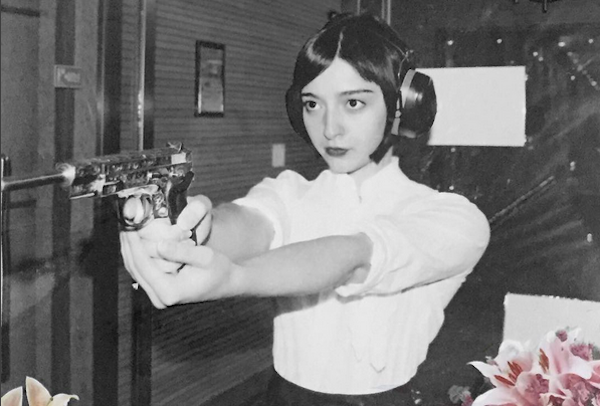
Photo: @amaliaulman Instagram
Operating a strict no shoes and no mobile phones policy, emerging art world sensation Amalia Ulman is screening her latest video work at the Live section of Frieze London 2015.
Entitled The Annals of Private History, the video explores the enduring appeal of private diaries as a space where female consciousness has traditionally been constructed, expressed, but also enclosed.
For this project, Ulman, who gained notoriety last year thanks to Excellences and Perfections—in which she uploaded over 200 selfies to her Instagram account, presenting herself as a semi-fictional character in a variety of guises, from the sexy ingénue to the health goddess—has now turned her gaze towards North Korea, where she had traveled to for preparing The Annals of Private History.
“I’m interested in facades and propaganda, and Pyongyang is the best and most simplified example of that. I just wanted to see it with my own eyes,” she told the Guardian of her research trip.
Still from Amalia Ulman’s The Annals of Private History (2015).
Photo: Courtesy Arcadia Missa.
The result, an animated video-essay that plays with PowerPoint aesthetics and kitschy girlie clichés, doesn’t address the political and economical situation in the impoverished and oppressed country. It focuses instead on a fictional history of the private diary to address questions of repression, desire, and introspection.
These concerns are also echoed in the act of forcing viewers to remove their shoes and leave their phones (perhaps one of the most treasured markers of conspicuous consumption owned by the average art world denizen) in a bucket at the entrance to the screening booth.
“The act of making the viewer do something is the performative element of the piece,” Rozsa Farkas, director of the young London gallery Arcadia Missa, told artnet News of the inclusion of Ulman’s film as part of the live art section of the fair. “But Amalia also wanted to play with ideas of authority, making viewers do something they might not necessarily be comfortable with.”
Amalia Ulman’s installation at Arcadia Missa, Frieze London 2015.
Photo:Linda Nylind. Courtesy of Linda Nylind/Frieze.
The piece, in typical Ulman style, is playful and subversive, keen on frustrating viewers’ expectations. It is, according to Farkas, a “feminist piece,” and yet, the narrator, voiced by Ulman herself in a flirtatious saccharine tone, is more femme fatale than bra-burner, alternating whimsically between innocence and perversity.
Another aspect that Ulman explores is the contemporary manifestation of the diarist: the vlogger. By using found sound footage from You Tube vloggers, Ulman probes our insatiable need to share our innermost issues with a faceless crowd. As with her Instagram posts, Ulman is cunningly prodding at the ways in which the Internet has become the ultimate arena where our private and public worlds collide and feed off each other.
By inhabiting the realm of online oversharers and by never establishing where the boundary between fiction and self-representation lies, Ulman cleverly mirrors and challenges our very current need of documenting and archiving our own existence, and of constructing and branding our own identities.
Interestingly, despite Ulman’s relentless explorations of acts of disclosure (hers and others’), we learn very little of the artist herself in the process. The more Ulman seems prepared to give us, the more she becomes an unattainable mystery. And that is, perhaps, the secret of her growing success.
For more on Frieze Week, see our Top 10 Booths at Frieze London 2015, What Sold on Day One at Frieze London 2015, our Insider’s Guide to the Best and Worst of London’s Frieze Week 2015 and be sure to make use of artnet News’ 5 Tips for Every Art Fairgoer. Also, see photos from Ken Kagami’s saucy fair intervention, as well as the top booths at Frieze Masters.